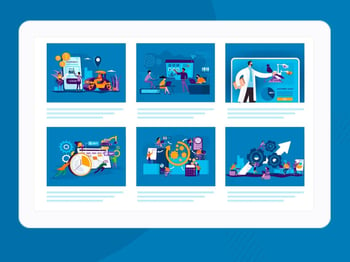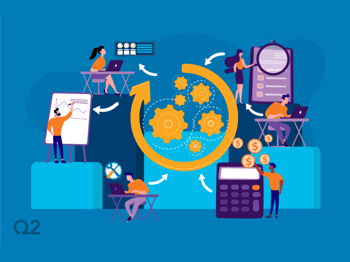In the competitive, $1 trillion equipment leasing industry, growth depends on identifying new ways to drive revenue through greater transaction volume and faster time-to-market for new products. The disruption of the marketplace and the workplace resulting from the COVID-19 pandemic is the most recent factor contributing to the growing demand for automation.
Even before the pandemic, rising expectations from a new breed of digitally savvy customers were bringing many leasing companies to a decision point. These companies knew it was inevitable that the legacy technology throughout their information technology (IT) systems—legacy technologies that typically complicate maintenance and impede innovation—had to be addressed. The onset of a global pandemic in the first quarter of 2020 only hammered the point home.
Enter fintech
Fintech solutions that offer or enable financing using streamlined technology can mean the difference between lessors remaining competitive and remaining viable. Fintech today is necessary to ensure a leasing company is efficient and profitable tomorrow—and in years to come.
Mukul Mittal, vice president of industry solutions at Q2 Lending, has seen the pandemic shut down companies lagging in their digital transformations. According to Mittal, two significant problems came to light under pandemic’s constraints. The first was the obvious impact on their customer base. One example shows a sudden plunge in creditworthiness for lessors leasing equipment to the restaurant, entertainment, or tourism industries. According to Mittal, the second aspect of the problem was the lack of a genuinely comprehensive digital process.
“Even if they were leasing to, say, the healthcare, medical, or other industries where there was a strong demand, they were unable to execute their business because they did not have a digital solution,” Mittal says. “A lot of them instead experienced what is known as ‘lipstick on a pig.’” These were companies that had a website or whatever they chose to call ‘a digital presence,’ but in reality, it wasn’t connected to their credit and underwriting systems—and it certainly wasn’t even remotely fintech. It would require any information that came in through their website need to be manually typed and input into their back-office system.
When the pandemic shifted many workforces to a remote model, they suddenly didn’t have people in an office who could perform these manual operations. “Most of their servers and applications were on their premises,” Mittal notes. “A true fintech solution could handle this transition from office to home completely digitally, without human input,” Mittal explains. He saw some Q2 Lending’s clients experience a substantial uptick in their volumes because they were all on the cloud and were able to operationalize activity while working from home. “There was very little disruption in their activity,” Mittal said.
Four ways fintech solutions can help
How, exactly, can fintech solutions contribute to automating and, ultimately, digitally transforming the way leases are marketed, originated, and their assets managed? Mittal shares four crucial ways fintech can contribute to a successful digital transformation.
- A nimble approach
Modern lease solutions need an open architecture supporting user interface toolkits so they can be configured without programming to meet each lessor’s unique business needs. Users should be able to easily create new fields, custom business rules, complex workflows, multi-step approvals, unique application program interfaces (APIs), and user interface portals. Fintech should make it easy to configure new lease products instantly. - Enhanced customer intelligence
Electronic registers of commercial activities provide greater levels of transparency to customer behavior and buying preferences. Analytical software predicts customer behavior, thereby driving sales outreach activities before customers even begin searching for new equipment. Data consolidated about the equipment itself will suggest maintenance, repair, and replacement. - Maintaining financial data in the cloud
Maintaining financial data in the cloud is cost-effective and secure and is now an acceptable norm in all kinds of businesses. Given the current situation, Mittal says many middle-market leasing companies will continue to realize the benefits of transitioning to the cloud.
- Innovative ways to evaluate credit.
Fintech-driven auto-decisioning systems can collect more than 700 data points, such as cash flow, payments, personal records, banking records, and automated spreads. Having this information consolidated and readily available removes impediments to rendering a credit decision. These systems also bring cost reductions and increased processing speed, both very important aspects of a full digital transformation.
Fintechs will be a significant component of the solution as the effects of the COVID-19 pandemic see a transformation in the way leases are marketed and originated and the way related assets are managed.
Related Resources:
Dig deeper into vendor finance with the Q2 eBook, "Vendor Finance in the New Normal Depends on Digital Transformation."
Download the infographic, "Top 3 Challenges of Vendor Programs."





